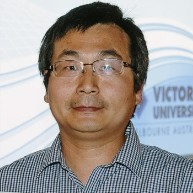Theoretical and Experimental Investigation of the Mass and Heat Transfers in Membrane Separation Processes
A special issue of Membranes (ISSN 2077-0375). This special issue belongs to the section "Membrane Processing and Engineering".
Deadline for manuscript submissions: closed (31 May 2022) | Viewed by 59931
Special Issue Editors
Interests: membrane distillation; wastewater treatment; desalination; advanced oxidation; membrane filtration; NF; RO
Special Issues, Collections and Topics in MDPI journals
Interests: water treatment; biopurification; membrane; virus filtration; electrocoagulation
Special Issues, Collections and Topics in MDPI journals
Interests: preparation and analysis of the structure and properties of gas transimission film; mass transfer, such as heat, oxygen, water vapor, aroma, and ethylene gas of multilayer composite film; modified atmosphere packaging and moisture-proof packaging for products
Special Issue Information
Dear Colleagues,
Membrane separation technology has been widely used in gas and liquid separation processes. It has the advantages of controllable selectivity, compact structure, and low ecological footprint. Depending on the characteristics of the membrane, it can be used to separate different phases such as solid from liquid or gas, solvent from solute, and different ions in the same phase. The selectivity or rejection of targeted components can rely on size exclusion, phase change, charge, etc. The active layer of the membrane can be a single material, composite materials or even formed during treatment, such as a membrane biological reactor. Various driving forces are involved in the mass transfer, such as the concentration gradient in forward osmosis, the electric potential difference in electrodialysis, the vapor pressure difference in the membrane distillation, and the pressure difference in filtration, reverse osmosis, and nanofiltration processes. Maximizing the mass productivity per unit driving force applied is preferred, since it will minimize the required membrane material or total footprint and energy input for the same treatment capacity. Therefore, it is critical to understand the factors or principles limiting or enhancing the transfer phenomena.
This Special Issue on “Theoretical and Experimental Investigation of the Mass and Heat Transfers in Membrane Separation Processes” will bring together articles on studies of the mass and heat transfer phenomena/principles during membrane separation. We are requesting articles on all aspects of membrane separation processes, including manuscripts on literature reviews and research on membrane characterization, membrane fouling, membrane fabrication, and modeling for heat and mass transfer.
Dr. Jianhua Zhang
Prof. Dr. Ranil Wickramasinghe
Dr. Hongge Guo
Guest Editors
Manuscript Submission Information
Manuscripts should be submitted online at www.mdpi.com by registering and logging in to this website. Once you are registered, click here to go to the submission form. Manuscripts can be submitted until the deadline. All submissions that pass pre-check are peer-reviewed. Accepted papers will be published continuously in the journal (as soon as accepted) and will be listed together on the special issue website. Research articles, review articles as well as short communications are invited. For planned papers, a title and short abstract (about 100 words) can be sent to the Editorial Office for announcement on this website.
Submitted manuscripts should not have been published previously, nor be under consideration for publication elsewhere (except conference proceedings papers). All manuscripts are thoroughly refereed through a single-blind peer-review process. A guide for authors and other relevant information for submission of manuscripts is available on the Instructions for Authors page. Membranes is an international peer-reviewed open access monthly journal published by MDPI.
Please visit the Instructions for Authors page before submitting a manuscript. The Article Processing Charge (APC) for publication in this open access journal is 2700 CHF (Swiss Francs). Submitted papers should be well formatted and use good English. Authors may use MDPI's English editing service prior to publication or during author revisions.
Keywords
- Membrane
- Separation
- Mass transfer
- Heat transfer
- Fouling
- Selectivity
- Retention








